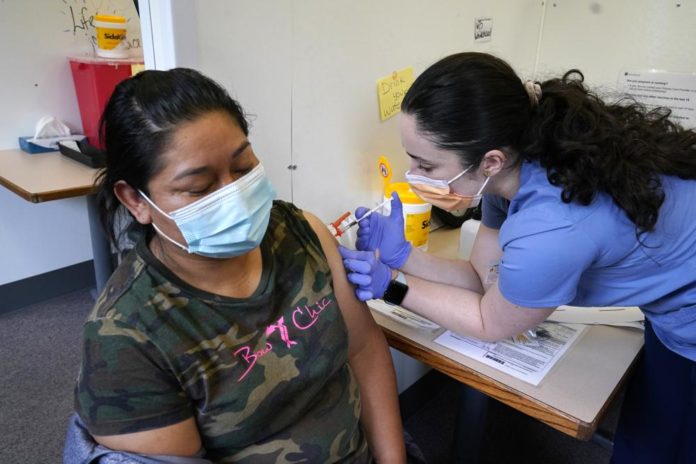
Arizona’s state-run COVID-19 vaccination sites, which were touted as a national model, will be shutting down later this month, officials said Thursday.
The state Department of Health Services announced all of its mass vaccination sites are gradually winding down operations and will be closed by June 28. Health officials pointed to the growing number of options for people to get vaccinated including pharmacies, doctors’ offices, and pop-up clinics.
“We’re in a much different position today than we were early in the year, with enough vaccine available throughout Arizona for virtually anyone to get vaccinated when they want close to home,” said Dr. Cara Christ, director of the department.
Anyone who wants to get both doses of the COVID-19 vaccine from a state-run site will have to get the first one before Saturday. After that, patients getting the first vaccine dose will be given information about how to get their second.
Approximately 1.6 million vaccine doses have been administered across several state mass vaccination sites in metro Phoenix, Tucson, Flagstaff, and Yuma.
The very first one, which opened in State Farm Stadium in Glendale, drew praise from President Joe Biden. He and Vice President Kamala Harris took a virtual tour of the federally funded site in February and expressed hope other cities would stage similar operations.
More than 5.9 million doses so far have been administered in the state. Around 3.3 million people have received at least one dose. More than 2.8 million have gotten both doses — that’s less than half of the state’s population eligible to receive vaccines.
Meanwhile, Arizona reported 322 new confirmed COVID-19 cases and five deaths Thursday.
The state data dashboard put out its latest numbers Thursday, showing the total number of cases and deaths are now 882,691 and 17,653, respectively.
The number of patients hospitalized statewide for virus-related reasons dipped slightly to 532. Of those, 167 were in ICUs.
Arizona’s seven-day rolling average of daily new cases was 575.9 as of Wednesday, according to data compiled from Johns Hopkins University. It’s slightly higher than a day earlier. The seven-day rolling average of daily deaths also rose compared to a day earlier to 10.3.
Republished with the permission of the Associated Press.














